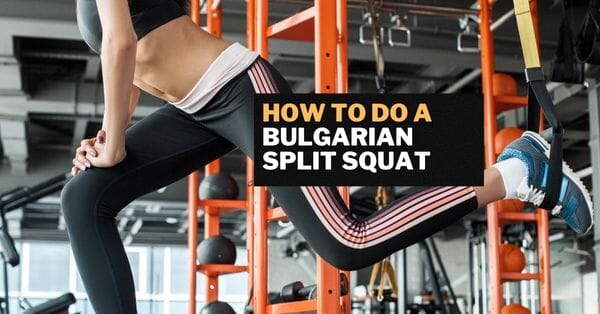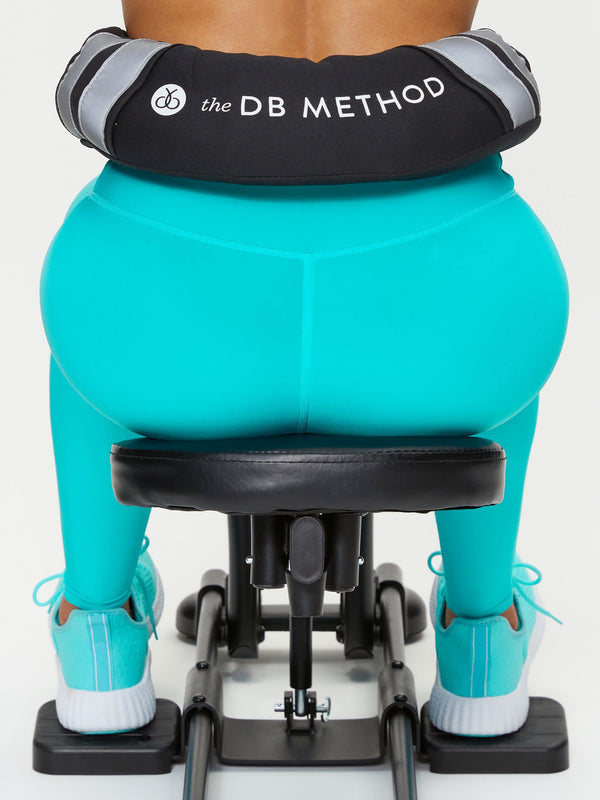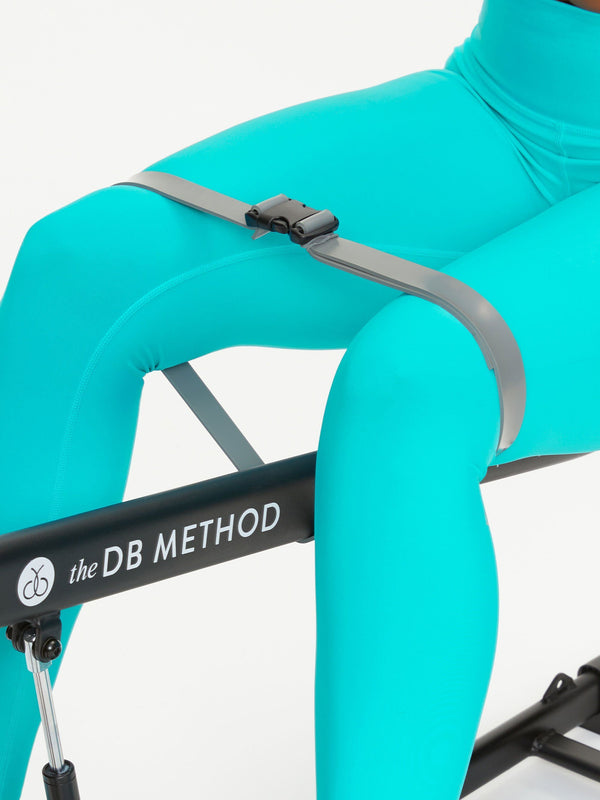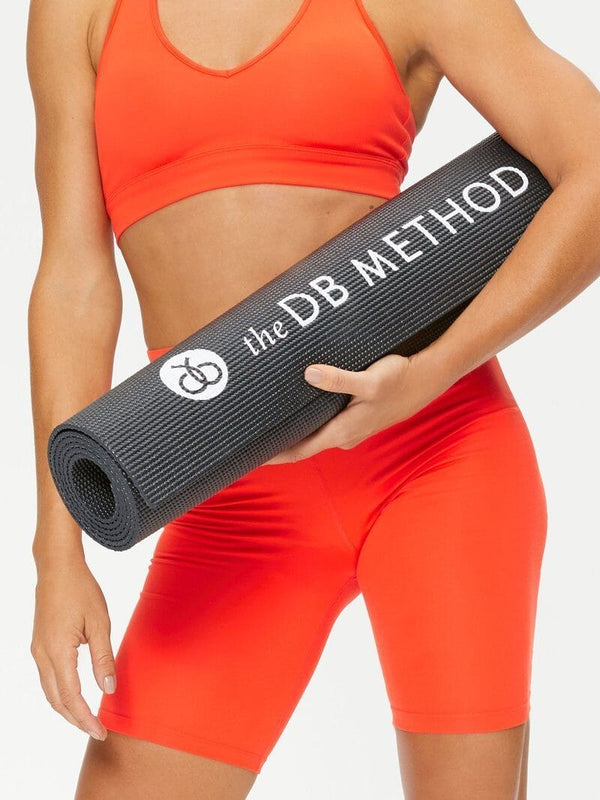If you want to take your lower body training to the next level, we’ve got you covered. Whether you are a runner, play soccer, or just want to correct muscle imbalances, Bulgarian split squats are for you.
While no one knows who created Bulgarian split squats, it was popularized by Bulgarian Olympic weightlifting coach Angel Spassov, and that is how the Bulgarian split squat got its name.
In fact, Olympic weightlifters are still looking for more effective ways to develop lower body strength, but until they find one, the Bulgarian split squat continues to dominate as the go-to exercise.
Fun-fact: The predecessor to the Bulgarian split squat was the single leg squat, until Angel’s visit to the US in the 80’s when this movement hit the mainstream.
So why is this movement so popular with weightlifters and people that need powerful legs? Simple. Bulgarian split squats tone your quads and glutes while improving your balance, strength, agility, and mobility. This is vital for athletes that need power and agility, building strength.
So let's learn how to do a Bulgarian split squat and how to modify the exercise to meet your needs.
To do a Bulgarian split squat:
- Stand in front of a knee-high platform (like a weight bench) about 2-3 feet.
- Get yourself into a forward lunge position with your torso upright, your core braced and your hips square to your body.
- Extend your right leg behind you and rest your toes on the platform.
- Keeping your torso upright, slowly lower your right knee toward the floor. Lower until your front thigh is almost horizontal, keeping your knee in line with your foot. Your front knee should form a 90-degree angle.
- Drive through your left foot to stand back up.
Now that you know how to do a Bulgarian split squat, here’s modified versions to help you burn more calories, build more muscle mass, or simply make the standard version easier until your body learns how to do it without assistance.
Dumbbell Bulgarian Split Squat
Dumbbell Bulgarian split squats are one of the best modifications for adding muscle mass to your quads and legs. This variation helps to fix muscle imbalances so you won’t fall down if you get knocked off balance. This is important whether you play sports or have a toddler running around your home.
- Stand in front of a knee-high platform (like a weight bench) about 2-3 feet. Hold a dumbbell in each hand with your arms at your sides and your palms facing each other.
- Get yourself into a forward lunge position with your torso upright, your core braced and your hips square to your body.
- Extend your right leg behind you and rest your toes on the platform.
- Keeping your torso upright, slowly lower your right knee toward the floor. Lower until your front thigh is almost horizontal, keeping your knee in line with your foot. Your front knee should form a 90-degree angle.
- Drive through your left foot to stand back up.
With dumbbells, you are limited on how heavy of a dumbbell you can use due to grip strength. This is a limitation to the dumbbell Bulgarian split squat, but there is also a solution.
Barbell Bulgarian Split Squat
Another way to add resistance to Bulgarian split squats is to replace your dumbbells with a barbell. Barbells let you use more weight than dumbbells and you aren’t limited by grip strength because you hold the barbell across your shoulders or in your hands.
- Stand with your feet shoulder width apart about 2 to 3 feet in front of a flat bench with your back facing the bench. Have a barbell in front of you on the floor.
- Bend your knees and use a pronated grip (palm facing downward) with your hands being shoulder width or wider apart.
- Lift the barbell over your head and rest it on the base of your neck.
- Move your right foot back so that your toe is resting on the flat bench.
- Slowly lower your leg until your thigh is parallel to the floor.
- Reverse the movement and return to the starting position.
- Switch legs and repeat.
There are a few things to be careful of when doing barbell Bulgarian split squats. The first is that dropping the barbell because you get stuck is dangerous for you and anyone around you. Balance is difficult as you first learn the movement, and the barbell places extra stress on your back.
Goblet Bulgarian Split Squat
If you are having trouble balancing with two dumbbells or a barbell, the goblet Bulgarian split squat modification is for you. By keeping the weight in front of you, it makes this variation easier to maintain your balance compared to the barbell version.
And unlike the barbell Bulgarian split squat, goblet squats are ideal for younger, developing athletes, and people with back issues because there isn’t any extra stress placed on your spine as there is no barbell adding pressure.
- Stand with your back to a bench or box.
- Grab a dumbbell and cup the top end of the weight in front of your chest. Your elbows should be pointed down.
- Place the instep of your right foot on the bench or box.
- Keeping your torso upright, slowly lower your right knee toward the floor. Lower until your front thigh is almost horizontal, keeping your knee in line with your foot. Your front knee should form a 90-degree angle.
- Drive through your left foot to stand back up.
Pro-tip: Use a smaller split stance and drive up through the ball of your foot for a better quad workout. A larger split stance and driving up through the heel of your foot works your glutes and hamstrings.
Stability Ball Bulgarian Split Squat
If you are working on improving your balance, this modification of the Bulgarian split squat is for you! Instead of using an elevated surface (like a weight bench or squat machine if you’re a DB Method customer) to place your stabilizing leg on, use a stability ball instead.
Using an unstable surface engages your core stability muscles and your front leg as you try to keep your body balanced and upright. With the increased focus on your balance, you will see big strength gains in your core and legs.
- Stand in front of a stability ball.
- Get yourself into a forward lunge position with your torso upright, your core braced and your hips square to your body.
- Extend your right leg behind you and rest your right foot on the stability ball.
- Keeping your torso upright, slowly lower your right knee toward the floor. Lower until your front thigh is almost horizontal, keeping your knee in line with your foot. Your front knee should form a 90-degree angle.
- Drive through your left foot to stand back up.
Banded Bulgarian Split Squats
Banded Bulgarian split squats have a unique benefit - it's easier at the bottom of the squat and harder at the top (which is normally the opposite). This is because the resistance band stretches and gives you greater resistance as you stand up.
With this modification, your legs will even out any muscle imbalances you have as well as improving your balance. You’ll also develop more strength and muscles mass in your legs, because your leg muscles are used throughout the entire movement.
- Stand in front of a knee-high platform (like a weight bench) about 2-3 feet.
- Get yourself into a forward lunge position with your torso upright, your core braced and your hips square to your body.
- Place the center of a resistance band under your left foot.
- Grab the ends of the resistance band and pull them up to your shoulders.
- Extend your right leg behind you and rest your toes on the platform.
- Keeping your torso upright, slowly lower your right knee toward the floor. Lower until your front thigh is almost horizontal, keeping your knee in line with your foot. Your front knee should form a 90-degree angle.
- Drive through your left foot to stand back up.
Bulgarian Split Squat Jumps
Bulgarian split squat jumps are beneficial because you work on building your power, muscles, and coordination while also taking the pressure off your knees. This modification improves your athletic performance for kicking soccer balls while you’re off balance and taking jump shots when playing basketball.
- Stand in front of a knee-high platform (like a weight bench) about 2-3 feet.
- Get yourself into a forward lunge position with your torso upright, your core braced and your hips square to your body.
- Extend your right leg behind you and rest your toes on the platform.
- Keeping your torso upright, slowly lower your right knee toward the floor. Lower until your front thigh is almost horizontal, keeping your knee in line with your foot. Your front knee should form a 90-degree angle.
- Reverse the movement and when you reach the starting position jump upwards so that your foot comes off of the ground.
Front Rack Bulgarian Split Squats
By placing your back foot on the bench, you are able to stretch out your hip flexors and quads. This builds your strength and flexibility without stressing out your lower back.
The larger range of motion for this modification also works your legs hard with a much lighter load than the other modifications.
Since it’s difficult to keep yourself balanced when you hold weights this way, you'll see an improvement in your balance and stability too.
- Stand in front of a knee-high platform (like a weight bench) about 2-3 feet.
- Get yourself into a forward lunge position with your torso upright, your core braced and your hips square to your body.
- Extend your right leg behind you and rest your toes on the platform.
- Hold a barbell, a pair of dumbbells, or a pair of kettlebells at your shoulders.
- Slowly lower your right knee toward the floor. Squat until your back knee is touching or almost touching the floor.
- Drive through your left foot to stand back up.
Now you know how to do a Bulgarian split squat and to modify it to work specific muscle groups, take less pressure off your back, or use this movement to grow muscle mass faster.








